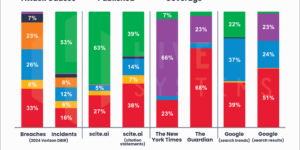Aviation associations representing airlines, pilots and airports across Europe called on Monday for mandatory registration and training of drone users following a number of near-misses between the unmanned devices and aircraft.
Drones are increasingly being used in areas such as agriculture, filming, for recreational use and for monitoring power plants and oil facilities.
That has led to a rise in the number of near-misses with aircraft as reported by pilots, especially on approach to landing, one of the most critical phases of flight.
Britain’s Civil Aviation Authority, for example, issued a warning last year after seven incidents in less than 12 months in which drones had flown near planes at different British airports. There have been more incidents this year.
There are currently no harmonized regulations across Europe for drones, although Europe’s aviation safety agency is working on a set of rules.
In a joint statement on Monday, European aviation associations called for the registration of all drones at the point of purchase and resale, mandatory training for drone users and the installation of technology to stop them from going too high, too far or into restricted areas near airports.
“Drones are such an appealing technology that many of the drone users are tempted to use them to the limits – or even beyond,” Dirk Polloczek, president of the European Cockpit Association said, adding more users were employing modifications to extend drones’ flight distance.
Highlighting their popularity, Paris held a drone festival at the weekend, allowing users to race their devices within an enclosed course on the Champs-Elysees.
Major drone maker DJI of China has built geofencing into apps controlling its drones, preventing them from flying into sensitive areas. It has also introduced a feature to override the geofencing feature in some instances, but only if users first register their details so they can be more easily identified.
The joint statement also calls for more to be done to educate users on the risks of flying too high or close to aircraft and for research into what would happen should a drone collide with a plane.
Modern aircraft are tested to ensure they can withstand bird strikes for example, but little is known about what would happen were a drone to be sucked into an aircraft engine.
“The signatories want to support the effort of the European regulator to produce a robust harmonized EU-wide regulatory safety framework for drones,” the associations said.





















 Insurance Carrier Employees Are Bored; Most Boring Rankings Published
Insurance Carrier Employees Are Bored; Most Boring Rankings Published  Soft Market Ahead? The Role of Digital Transformation for E&S Insurers
Soft Market Ahead? The Role of Digital Transformation for E&S Insurers  Moderating Premium Rates, Falling Yields: European Insurers Resilient
Moderating Premium Rates, Falling Yields: European Insurers Resilient  What’s Not Changing in 2025: Homeowners Outlook, Re Retentions
What’s Not Changing in 2025: Homeowners Outlook, Re Retentions 









